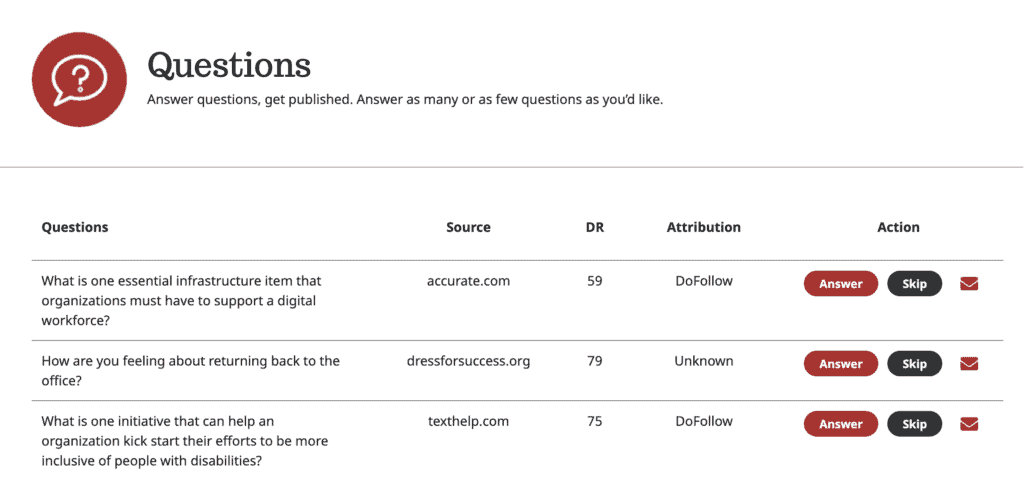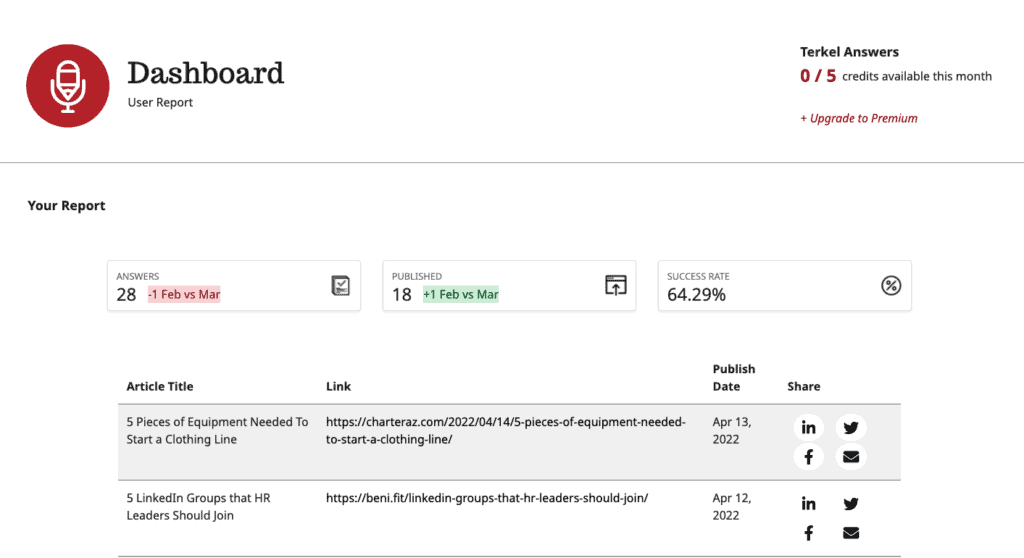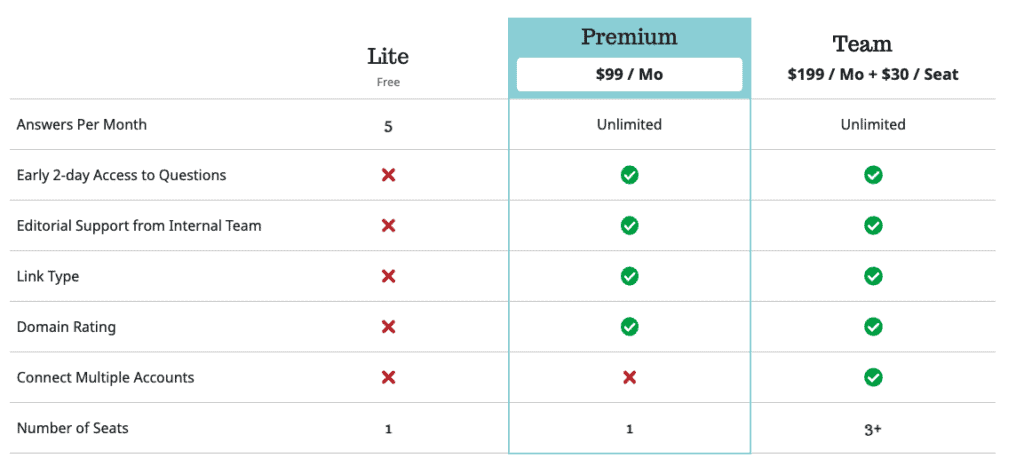You might be wondering, what are the key differences between HARO and Terkel?
Both platforms help connect experts to publishers. Experts and writers can pitch quotes to publishers in hopes of getting featured in articles.
While HARO has been around for awhile, Terkel is a new alternative that allows experts (like you) to share their stories on top-tier publications like GoDaddy, Calendly, Zapier, and SHRM’s blog.
Terkel’s format is simple: answer questions, get published.
Below, we’ll go over some of the main differences between Terkel and HARO and cover these topics:
- User Experience
- Pitch Process
- Targeted Questions
- Conversion Rate
- Metrics and Dashboard
- Deadlines
- Cost
Let’s walk through the main differences.
User Experience
- HARO rarely makes updates to its platform, resulting in a poor user experience. The platform looks and feels outdated.

- Terkel’s platform is updated weekly in order to provide the best user experience. We conduct customer interviews to implement the features that you want to see. Ultimately, our Q&A format feels seamless and easy.

Pitch Process
- On HARO, you are responsible for crafting an email to every publisher that you pitch. This results in a long stream of emails delivered to your inbox.
- Terkel spares the inbox. We do all the communication with publishers, so all you have to do is contribute your expertise. This reduces the back and forth hassle between you and publishers.
Targeted Questions
- HARO sends experts 3 emails per day with a list of all their opportunities.
- On the other hand, Terkel aligns questions with the expertise of a source to reduce noise and improve content quality.
Conversion Rate
- HARO’s conversion rate is low. According to Sourcery, their writers typically won 1 link for every 8-15 pitches. Additionally, writers at Content Powered had similar results, stating that roughly one in every fifteen pitches were accepted. This averages to 7%.
- At Terkel, our average user success rate is 33%!
Metrics and Dashboard
- HARO does not include a dashboard to easily track your placements and success on the platform.
- On the other hand, Terkel includes a customized dashboard with important metrics and all of your publications. Ultimately, this helps track your success in one easy location.

Deadlines
- HARO includes fixed deadlines in pitches. Even if publishers would like to close queries early, they can’t. Publishers may receive an overwhelming amount of responses due to this, which lowers your success rate and visibility.
- Terkel opportunities close when we have collected enough responses to satisfy search intent. By closing questions on a first-come, first-served basis, we aim to improve your publication success rate and avoid unnecessary work.
Cost
- HARO Costs $19-$149 per month for a premium subscription.

- Terkel premium plans start at $99 and Team plans start at $199.

Ultimately, these are some of the main differences between Terkel and HARO. However, the best way to understand the differences is to experience Terkel for yourself. You can do so by answering or asking questions at Terkel.
